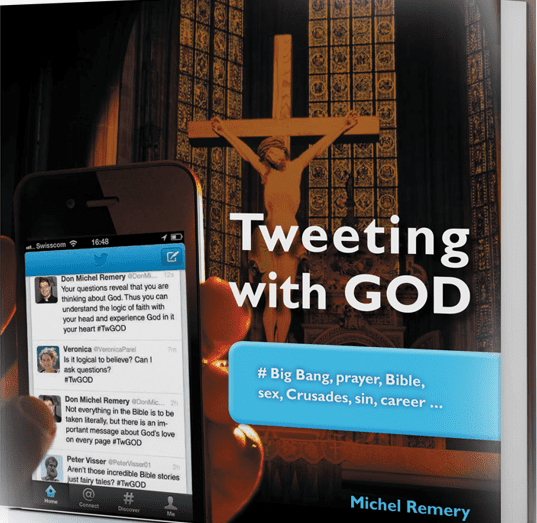
by Joyce Hart
As a Director of Faith Formation, part of one’s ministry includes preparing children and adults, particularly in the Rite of Christian Initiation for Adults (RCIA), for the Sacrament of Reconciliation and Penance, or mostly known as Confession.
It has its challenges, especially within the RCIA; one wonders whether the Catechumens will ever receive the Sacrament after their Baptism. Of course we are taught that Confession is only necessary in the case of mortal sin, or as an annual obligation. Nevertheless, it is a Sacrament of healing.
Encompassing all the challenges of the day, how can the beauty and spirituality of the Sacrament be shared? Catholics are one of the few faiths with auricular Confession, yet it has permeated the media and circles outside of Catholicism. In the popular novel, The Girl on the Train by Paula Hawkins, the character Megan writes: “I’ve always thought that it might be fun to be Catholic, to be able to go to the confessional and unburden yourself and have someone tell you that they forgive you, to take all the sin away, wipe the slate clean.”
And of course it is also displayed in many movies, one of my favorites being Moonstruck, wherein the heroine, Loretta, goes to Confession:
Loretta: “Bless me father… “Twice I took the name of the Lord in vain, once I slept with the brother of my fiancée, and once I bounced a check at the liquor store but that was really an accident.”
Priest: “Then that’s not a sin, but what was that second thing you said Loretta?”
Loretta: “You mean the one about once I slept with the brother of my fiancée?”
Priest: “That’s a pretty big sin.”
Loretta: “I know.”
Priest: “You should think about this.”
Loretta: “I know.”
Priest: “Alright, for your penance say two rosaries. Be careful Loretta. Reflect on your life.”
Loretta: “Alright.”
The priest offers absolution, Loretta exits; prays. Yet only moments later, we see her preparing for her date with Ronny (Nicolas Cage), the brother of her fiancée. We don’t know the inner struggles Loretta is grappling with, and we know she was moved to go to Confession. Was she praying about the situation? Did she take the advice of the priest and “pay attention,” because eventually, it works out?
At one point in the movie Ronny says, “I don’t care if I go to Hell. I don’t care if you go to Hell. . .” The impression I get is that they don’t really believe they are going to Hell. Nor do I believe that is what most people think today, when they are committing what would be considered mortal sins.
Growing up in the 70’s, I only knew God to be a loving and merciful God. Fortunately, I had never heard stories of verbal or physical abuse within the Confessional, or any regarding the Church for that matter; I watched my grandmother and mother going to Confession, and so by the time I was frequenting the Sacrament, there was no fear; it was incongruous with what we learned in class about Jesus.
My growing brain had its limitations; one went to confession when one was truly sorry for something one had done. Making up for the wrong, and seeking conversion, was something I would later grow into, much later.
We emphasize that God is a God of love and mercy. The Act of Contrition has evolved where phrases like “just punishments” have been omitted. We give tours of the Confessional, hold parent workshops using resources from Loyola Press, and even have a party after the children receive the Sacrament for the first time. But what about after second grade? What about the Catechumens who are experiencing a transition? What is the role as Director of Faith Formation?
Yearning to understand the history of Confession, I stumbled upon the book, The Dark Box by John Cornwell.
The book is in some ways as ominous as the title; it’s a brutally honest account of many scandals in the Catholic Church, but also highly informative, scholarly, and an insightful work, incorporating the many changes in the way the Rite has been carried out throughout the years.
Cornwell takes us from the early Church, through Pope Innocent III, to the Council of Trent to St. Charles Borromeo (who instituted partitions in the Confessional), to St. Teresa of Avila, to Cardinal Carlo Mario Martini to Pope Francis, of whom he writes, “it has been revealed that Pope Francis as archbishop of Buenos Aires, would go to the city’s red-light district at night to give spiritual comfort to prostitutes, sitting on a roadside bench.”
Cornwell stresses some negative aspects of private Confession, but highlights the positive aspects as well. The book offers much to contemplate and addresses questions that often arise within a parish, and within the church, itself: are communal penance services useful? Isn’t there a benefit to voicing your sin aloud to another person who has an interest in your spiritual well-being? Should we go back to a time prior to Pope Pius X and increase the age of first reconciliation and penance to thirteen or fourteen, rather than six or seven? Should Confessions be face-to-face all the time, or always partitioned? How should the Sacrament be taught in Seminaries? Should Confession continue to be an annual obligation?
The Sacrament, if taught with precision and care, is liberating. It can be instrumental in spiritual maturation. Cornwell ends with a poignant quote from one of my favorite theologians, Karl Rahner, citing St. Augustine, invoking the image of Lazarus rising from the tomb: “When a Christian stands outside the Confessional ready to tell his sins to a priest, ‘he has already been raised by the word of grace of Christ from the tomb of sin, like Lazarus….he has already begun to live.’”
During this season of Lent, how will you prepare for Confession so that you may begin to live?
 Joyce Hart is a Director of Faith Formation in Queens, NY and a volunteer with Lifeway Network, an organization looking to combat human trafficking, and has worked extensively with LAMP Ministries in the Bronx.
Joyce Hart is a Director of Faith Formation in Queens, NY and a volunteer with Lifeway Network, an organization looking to combat human trafficking, and has worked extensively with LAMP Ministries in the Bronx.













